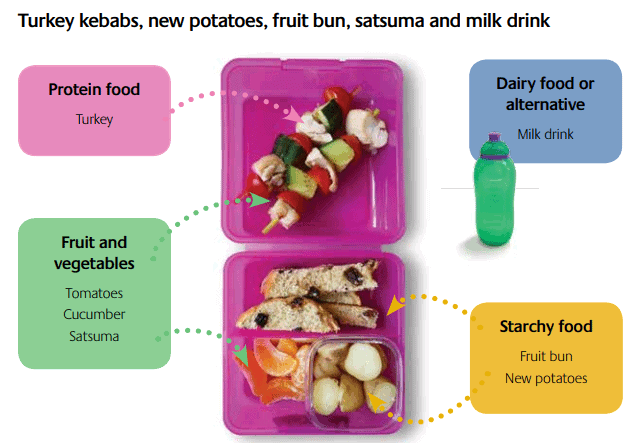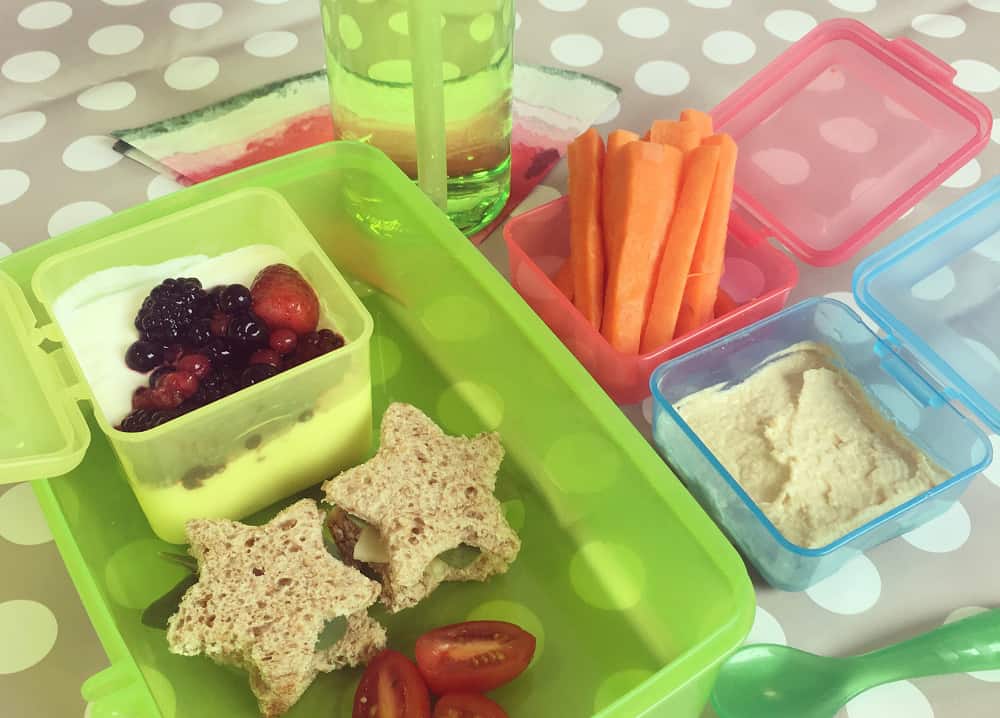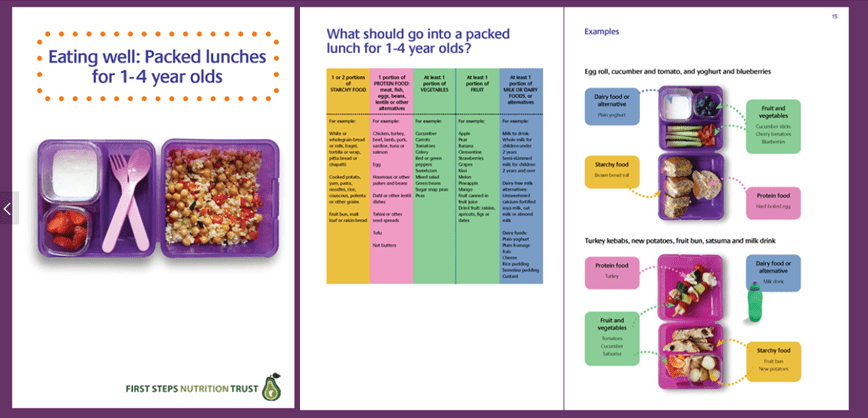Sending your kids to school, nursery or holiday clubs with a healthy packed lunch is important. What they eat throughout the day supports their growth and development, and also fuels their ability to learn, concentrate and play. Let’s take a look at our top tips for planning healthy, nutritious packed lunches for your little ones.
Packed Lunch Top Tips for Parents!
Use the checklist below when preparing your child’s packed lunch to make sure it contains the variety of food they need to grown and develop.
- Make sandwiches into exciting shapes. Try using a biscuit cutter to create stars, hearts, animals etc.
- Put wraps or pitta bread and pots of fillings in your child’s lunchbox as making them up themselves will be more exciting.
- Offer sliced up vegetables as they can be a fun dipping food. Try hummus or cream cheese for dipping. The more colourful the better!
- Add bite- sized fruit as this will be easier for them to eat. Try sliced grapes (cut length ways), melon, halved strawberries, sliced banana and apple. Check out our blog on preparing foods safely to reduce the risk of choking here! (opens in new tab)
- Tip: add a little squeeze of lemon juice to stop sliced fruit from going brown!
- If your child likes crisps, try swapping them for other crunchy textured foods, such as crackers or rice cakes.
- Instead of including foods, such as biscuits, cereal bars, cakes and chocolate, swap for healthy alternatives, such as homemade fresh fruit scones, malt loaf, fruit teacakes or fruit breads.
- Get your little one involved in choosing and preparing what goes into their lunch box as this can mean they are more likely to eat it.
- To keep lunches cool, include an ice pack or add a frozen drink or yoghurt.
- When you can, try to make meals from scratch instead of buying ready-made items which can be high in sugar and salt. Try making bigger quantities of dishes that you cook and keep some for packed lunches.

Lunchbox top tips for early years settings!
It is important for early years settings to communicate your guidance on lunch boxes with families. There are lots of ways you can achieve this:
- Make parents aware of your food policy and share your settings menu with families. By sharing families can be encouraged to provide the same or similar healthy food choices. This will ensure consistent healthy eating messages and encourage children to eat together. For parents this is a great way to get some inspiration for your lunchboxes and menus are normally available as a two to four week cycle.
- It is important to collect and share details on children’s food allergies and intolerance in case they come in contact with other food in the setting. It is also important to consider the food that other children in the setting with allergies may come into contact with too.
- Communicate how you will store food safely and how you will reheat it, if appropriate. The food will need to be labelled with the child’s details. You can get more details on safe food storage and preparation from the Food Standards Agency ‘Safer food, better business’.
- You can get lots more top tips by completing our Developing a Food Policy (opens in new tab) or Menu Planning (opens in new tab) training.

How to Choose the Right Lunch Box?
To support children to enjoy their lunch, let’s look at how to serve food and choose the right lunchbox. Here are some of our top tips:
- Choose a simple lunch box that will keep the contents safe and well packed. A box with compartments is a good option as different parts of the lunch can be kept separate and it’s easier for little ones to see what they have.
- Small containers with lids can be used inside the lunch box, to keep ingredients separate. These can be used, for example, for yoghurt or houmous, or for portions of fruit and vegetables.
- Think sustainable- use containers and cutlery that can be washed and used again.
- Be sure to clearly label your child’s lunch box with their name.
- Don’t forget to include a drink. All early years settings will provide water to children across the day. Drinks can be sent in a simple bottle that children can drink from. It is easy to add a child’s name to the bottle, and it can be kept cold with the packed lunch in the fridge. In many early years settings, simple drinking cups will be available and children might like to have their drink poured into the same type of cup used by the other children. Cups should be open-topped. If bottles are used, these should have a ‘free flow’ spout.

Lunchbox Examples
First Steps Nutrition have lots of great lunchbox ideas which we have shared below. You can you check out lots more in their resource Eating well: Packed lunches for 1-4 year olds (opens in new tab)

Need more healthy lunch box ideas?
Visit Better Health Healthier Families (opens in new tab) and First Steps Nutrition (opens in new tab) for more lunchbox inspiration.
There are lots of great recipes ideas on our YouTube (opens in new tab) Channel.

Heya.
This is what I do in order to simplify my own lunch options each week. For example I like to always make a short written list of my own lunch ideas in addition. Good luck. I take stock of what is in my home cupboards as well. I also take a careful look at what I’ve got in lieu of doing a top up food shop. It does help. Today I had leftover rice which I heated up at work. That was it really. I discuss ideas.
Hi Thara, many thanks for taking the time to read our blog which, we hope you found useful. Great to hear about the steps you take to plan your weekly lunch. We thought it might be useful for our readers to learn a little more about reheating rice and some of the precautions you should take. Here is the guidance from the Food Standards Agency: https://www.food.gov.uk/sites/default/files/media/document/5-cminders-cookingsafely-01-cooking-and-reheating-safely.pdf
Best wishes,
Early Start Nutrition